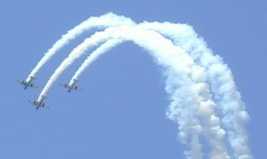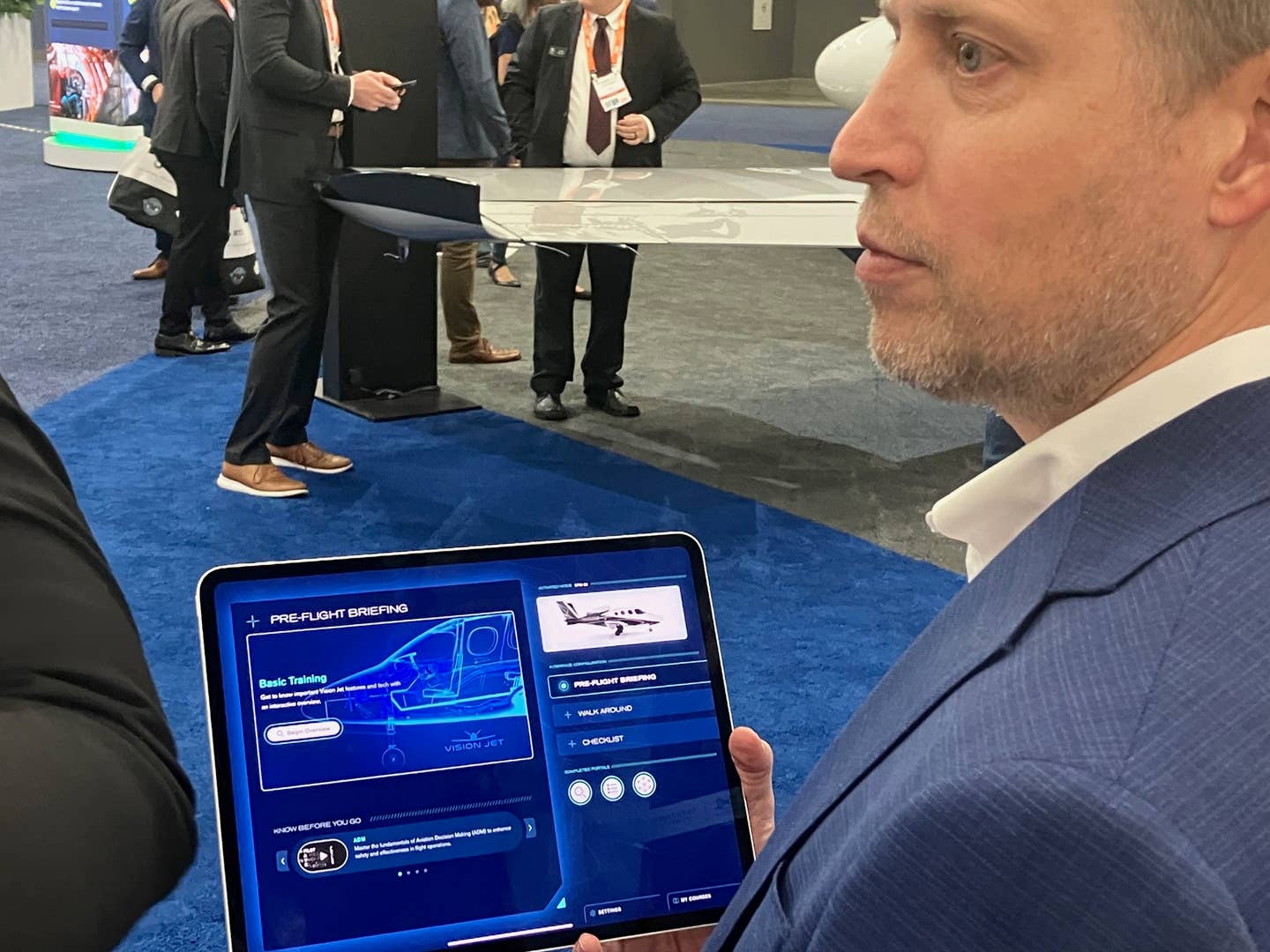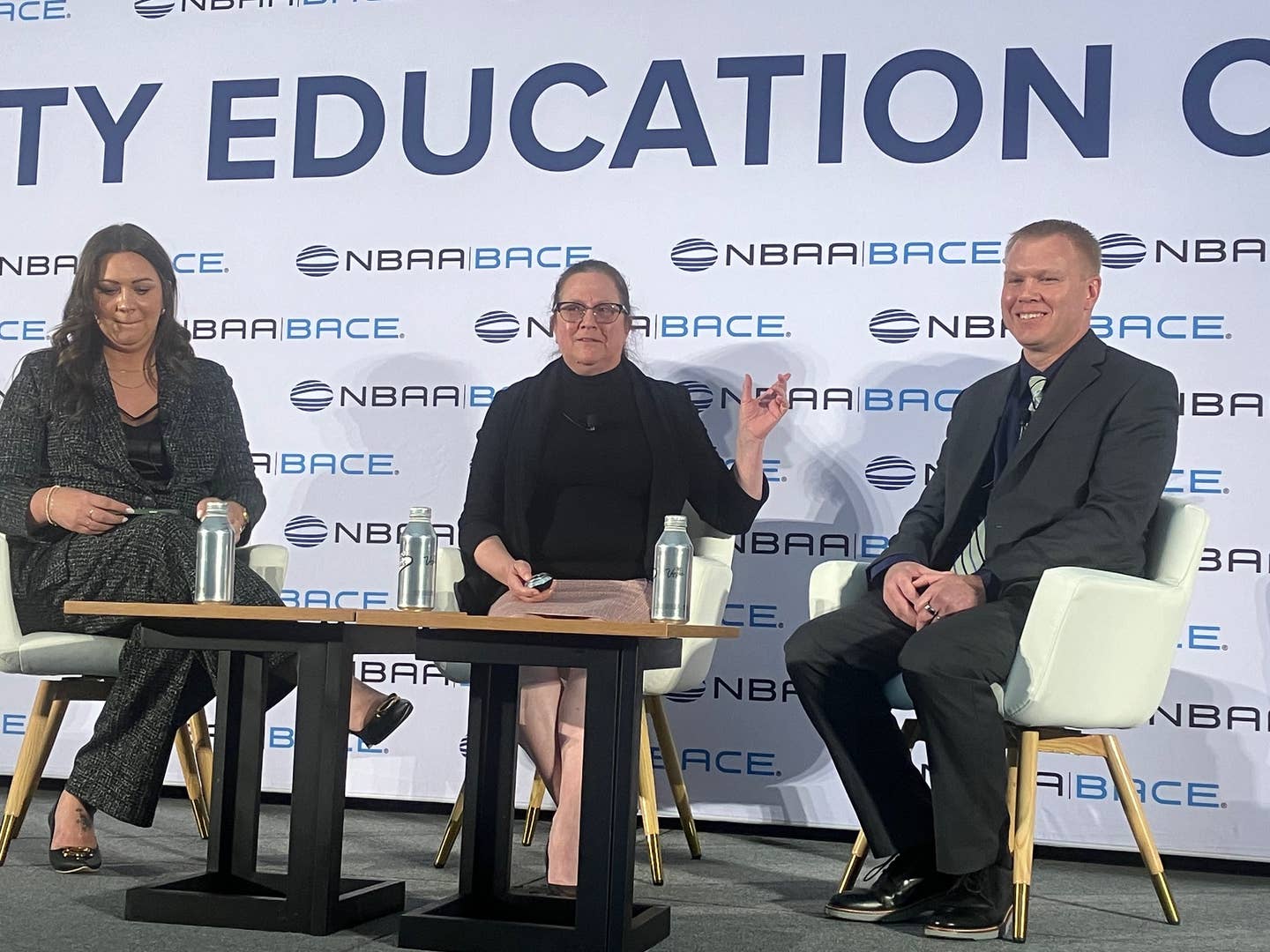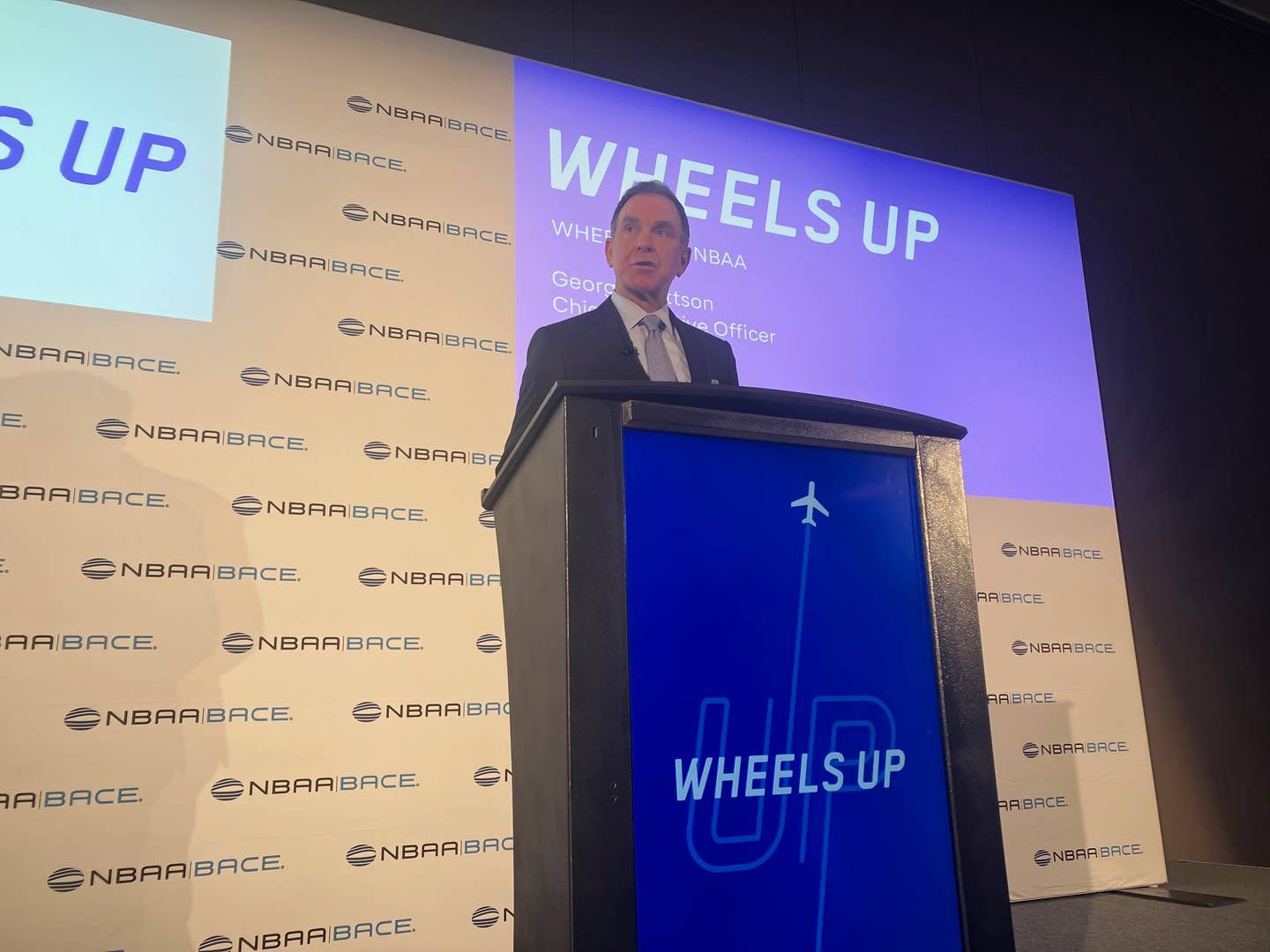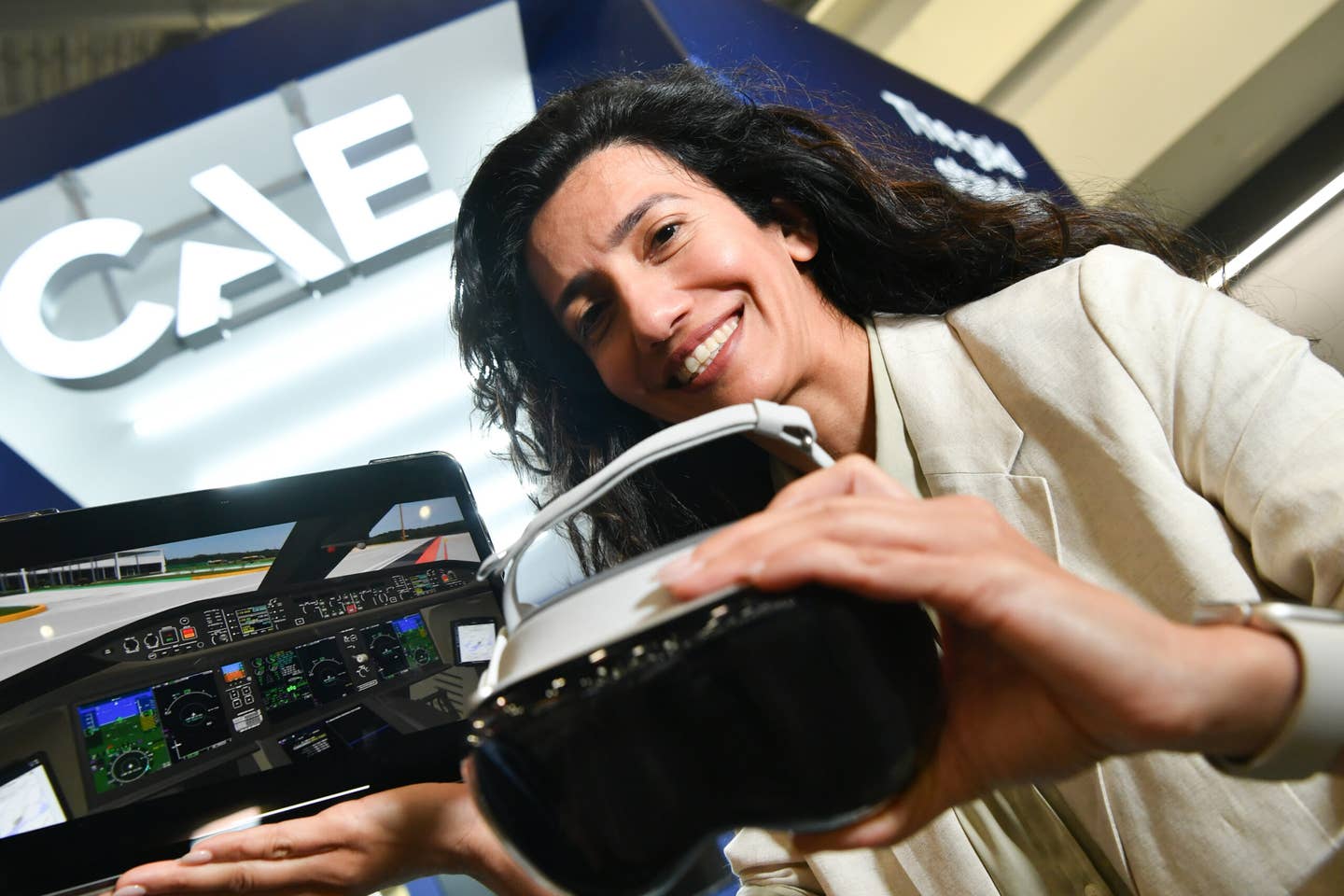By Any Other Name …: Sun ‘N Fun 2000 Living Up to Its Name
Comprehensive coverage of this year’s Sun ‘N Fun.
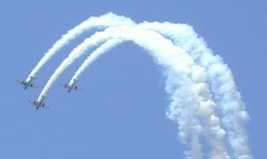
Special Report:
Sun 'n Fun 2000
By Any Other Name: Sun 'n Fun 2000 Living Up To Its Name
Comfy Days, Cool Nights, Dry Camps And Few Bugs...
When the faithful gathered for the first EAA Sun 'n Fun some 26 years ago, conditions that matched the title were hit and miss. January in Florida can be like that, so the chapter fly-in moved the event to February, then to March and, finally, to April, a time of year when even Florida has trouble mismatching meteorological conditions to the name of the event. Those mismatches sometimes still occur, but not for this 26th annual fly-in.
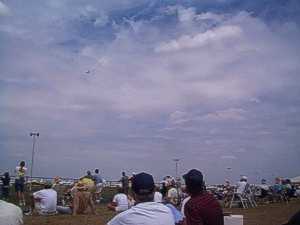 Opening day delivered an atypical 40-degree dawn with winds about triple what the aeronauts signed on for the opening-morning balloon race wanted to work with. Scratch the gas bags and wicker gondola riders from the agenda. As of last night, that was the only noteworthy change in plans for what has, to date, been a picture-perfect Sun 'n Fun 2000. Those cool nights keep the 30,000-plus campground dwellers largely bug-free in their Rayon Ramadas and rolling-homestead motorhomes.
Opening day delivered an atypical 40-degree dawn with winds about triple what the aeronauts signed on for the opening-morning balloon race wanted to work with. Scratch the gas bags and wicker gondola riders from the agenda. As of last night, that was the only noteworthy change in plans for what has, to date, been a picture-perfect Sun 'n Fun 2000. Those cool nights keep the 30,000-plus campground dwellers largely bug-free in their Rayon Ramadas and rolling-homestead motorhomes.
The only noteworthy aircraft incident so far involved Bruce "I'm not Hoot" Bohannon, when his ExxonMobil Tiger suffered a temporary engine-core calamity during his assault on the 6,000-meter time-to-climb record Tuesday, a setback made harder to accept since Bruce's time through 3,000 meters had him on-track to best the mark. But, more on Bohannon's record attempt in a moment.
...Paste Smiles On Management's Faces...
"I'm very relaxed because, first and foremost, we've had a safe show," said John Burton, the fledgling executive director of EAA Sun 'n Fun working through his first show in the PIC seat. "The weather has tremendously helped to this point, even though it was really pretty chilly that first morning," he told AVweb's Dave Higdon in an exclusive conversation.
Of course, Burton is no stranger to Sun 'n Fun and vice versa. Burton worked six prior Sun 'n Fun fly-ins as the vice president of communications for the Experimental Aircraft Association in Oshkosh. But the year 2000 Lakeland fly-in is Burton's first from the other side of the fence, if you will, as a hometown insider rather than an out-of-town exhibitor.
 And if first impressions truly do mean everything, the staff of employees and, in particular, volunteers has left a strong, favorable first impression on Burton that has contributed to his smiling, easygoing demeanor for the past week. "My impression of Sun 'n Fun, first of all, is everything I expected and more," he said.
And if first impressions truly do mean everything, the staff of employees and, in particular, volunteers has left a strong, favorable first impression on Burton that has contributed to his smiling, easygoing demeanor for the past week. "My impression of Sun 'n Fun, first of all, is everything I expected and more," he said.
"First of all, I am tremendously impressed with the dedication of everybody associated with Sun 'n Fun and with the unbelievable effort everybody puts forth. Second is the depth and breadth of the activity on the field; there really is something here for every interest and I think that bodes well not only for the event but for the organization, as well."
"Finally, I continue to be encouraged at the high quality of the people involved in aviation," he added. "It's my first year here and I've seen so many familiar, friendly faces welcoming me to this family, and it means a lot to me."
...From The Original Old Guard, More Smiles, Fewer Frowns...
"Well, I'm enjoying being something more like an interested observer," quipped Billy Henderson, Sun 'n Fun's first executive director. "This is the first time in 15 years that problems arise are somebody else's to contend with and I'm rather enjoying the opportunity to enjoy this fly-in again."
Henderson's tenure is part of the reason why Burton is enjoying his transition from EAA to Sun 'n Fun, because it was under Henderson's leadership and direction that the Sun 'n Fun employees, board of directors and volunteers - somewhere in the neighborhood of 3,500 total - brought the fly-in and the growing International Sport Aviation Museum to their current state of health.
A tip of the wing tip to you, Billy. May you enjoy many happy years of enjoying Sun 'n Funs to come.
...With Lots And Lots Of Smiling, Flying Faces From Faraway Places
 As of Wednesday, Sun 'n Fun 2000 showed signs of attracting a few more attendees than last year, thanks to the graces of good weather, a growing community of fliers and suppliers, and the event's unwavering appeal as a salve to the weather-savaged from north of the Florida Panhandle. Attendance on opening day beat last year's opening-day crowd and, according to show officials, the head count as of Wednesday showed an increase of about 3% above last year's level at the same point in the week-long event.
As of Wednesday, Sun 'n Fun 2000 showed signs of attracting a few more attendees than last year, thanks to the graces of good weather, a growing community of fliers and suppliers, and the event's unwavering appeal as a salve to the weather-savaged from north of the Florida Panhandle. Attendance on opening day beat last year's opening-day crowd and, according to show officials, the head count as of Wednesday showed an increase of about 3% above last year's level at the same point in the week-long event.
And, as always, part of that crowd came to Lakeland for a chance to see, touch and buy some of the latest new gadgets in aviation - before the gang back home would even read about those wondrous widgets in the pilot-oriented periodicals. ExxonMobil, for example, debuted its new 20W-50 Elite aircraft-engine oil, a semi-synthetic designed to endure far more punishment than the lubricants that lubed before.
Honeywell kicked off promotions of the new, budget-oriented IHAS 1000 integrated hazard warning system built around the equally budget-minded KMD 150 multifunction display; showed off a test-bed installation of the already operating Flight Information System; and promoted the upcoming Wingman Services that will be available over the data-link network, services that will include such amenities as email messaging, medical help and nearly-live Nexrad weather radar. Cockpit-weather-deprived, take note.
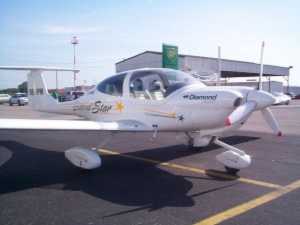 New airplane announcements and examples were arguably less abundant than in prior years, but not absent, by any means, and incremental improvements were notable in many areas. For example, Diamond Aircraft showed off a pristine version of its forthcoming DA-40-180 Star four-seat single in the exhibit area, while the test-bed article continued to build time and landings, flying demonstration flights from Plant City Municipal, a few miles west of LAL. At last count, the test-bed showed more than 1,100 hours of flight time and in excess of 16,000 landings - without showing any signs of significant wear.
New airplane announcements and examples were arguably less abundant than in prior years, but not absent, by any means, and incremental improvements were notable in many areas. For example, Diamond Aircraft showed off a pristine version of its forthcoming DA-40-180 Star four-seat single in the exhibit area, while the test-bed article continued to build time and landings, flying demonstration flights from Plant City Municipal, a few miles west of LAL. At last count, the test-bed showed more than 1,100 hours of flight time and in excess of 16,000 landings - without showing any signs of significant wear.
Lancair drew steady business to its Columbia 300 demonstrator at Winter Haven, as did the CH2000 from Aircraft Manufacturing and Development and the SR20 from Cirrus Design. Cirrus and Lancair helped fan some flames of excitement with, respectively, an update on a IO-550-powered SR20 - perchance the SR22? - and the Lancair Turbo 400, a TSIO-550 version of the 310-horse Columbia.
Among the two-seat set, Aviat showcased its race-bred 110 Special hot-rod, while HGL Aero got plenty of mileage from flying its sleek composite Eagle 150B, both profiled first in AVweb earlier this year. Rans Inc. finally settled on a configuration for the long-awaited S-17 Stinger ultralight and the little solo-seater acquitted itself quite well in the brisk wind conditions that came along daily. And among the ultralight aficionados who crowded daily into Paradise City, it seemed to the interested observer that powered parachutes were beyond critical mass and approaching dominance along the rows of manufacturers of the lightest flyers.
Even the mainstream plane makers made hay with New Piper, Old Beech (nee' Raytheon Aircraft) and Cessna displaying their finest piston, propjet and light-jet products - among them, the first Cessna Citation CJ1 and a prototype of the New Piper Meridian.
Of course, what would a fly-in be without some representatives of our old warriors? Something less than a full-spectrum fly-in, at the least. Sun 'n Fun 2000 drew dozens of examples from the last World War, as well as three flying museum pieces from the first Great War, courtesy of the folks at the Old Rhinebeck Aerodrome in New York.
No matter what you like to fly, something on the field of Sun 'n Fun should soothe that aviation Jones - unless hot air is what it takes to float your, well, boat. But not even new management at Sun 'n Fun could do anything about Sunday morning winds that would have made Dorothy and Toto feel right at home.
The Flight Life And The Night Life: As Diverse And Entertaining As Ever
 Fly-ins of all sizes are typically part aviation and part socialization and Sun 'n Fun has always been ripe with both - as it is again this year.
Fly-ins of all sizes are typically part aviation and part socialization and Sun 'n Fun has always been ripe with both - as it is again this year.
Whether enjoying burgers at Saturday night's Controllers Cook-out - staffed by the FAA's cadre of air traffic controllers, all adorned in their PHD hats (for Precision High Density control) - a catered reception by a lake for customers of a major association, or a down-and-funky jam session during the CGS Hawk Owners party in Paradise City, Sun 'n Fun so far has delivered plenty of those times when old friends reacquaint, new friends get introduced, and strangers sound like old friends cussing and discussing their loves and loathes in aviation.
And, as this first installment of AVweb's Sun 'n Fun coverage reached its deadline, the show officially hit only the halfway mark. Still to come are parties for the War Birds set, tonight's gathering of the seaplane set after the all-day Splash In at Lake Parker, or the Ground Loop Party for the volunteers. Sun 'n Fun still has lots of life left to send home the faithful warm and fuzzy from the experience. We'll catch you up on the rest on Monday. In the meantime, c'mon down - you still have until Saturday to enjoy the sun and the fun with us.
Time To Climb Record Stands
Bohannon Vows To Try Again
 One of the most eagerly anticipated Sun 'n Fun events Tuesday was Bruce Bohannon's crack at another world record with his greased-cat-fast Exxon Flyin' Tiger. Unfortunately, though the temperature and wind gods were smiling as Bruce headed skyward in his 6,000-meter (about 20,000 feet) quest, the fates were not. Up to about 8,000 feet, the Flyin' Tiger was flyin' like the wind ... then came the fateful "burp." "In a practice run if the engine burps, I shut her down and land. But I came here to break a record, so I kept going," Bohannon told AVweb's Liz Swaine. The burp turned out to be the sound of the engine "shelling," and at about 10,000 feet, the engine, according to Bohannon, "turned loose."
One of the most eagerly anticipated Sun 'n Fun events Tuesday was Bruce Bohannon's crack at another world record with his greased-cat-fast Exxon Flyin' Tiger. Unfortunately, though the temperature and wind gods were smiling as Bruce headed skyward in his 6,000-meter (about 20,000 feet) quest, the fates were not. Up to about 8,000 feet, the Flyin' Tiger was flyin' like the wind ... then came the fateful "burp." "In a practice run if the engine burps, I shut her down and land. But I came here to break a record, so I kept going," Bohannon told AVweb's Liz Swaine. The burp turned out to be the sound of the engine "shelling," and at about 10,000 feet, the engine, according to Bohannon, "turned loose."
The engine stopped producing power, so Bohannon did all he could do ... pushed the nose down and aimed for the Lakeland runway. "I've practiced hundreds and hundreds of deadstick landings at my home airport, so I wasn't scared. I was just disappointed at not getting the record." He also declared an emergency, for the first time, he said, since he started flying at age 13. He knew the sky over Lakeland was full of traffic, and he let the folks at ATC sweep them all away. With oil scattered everywhere, he snapped the canopy back and locked it, and made a smooth landing. Once back on the ground, the Continental O-200 engine was taken off the Tiger to be sent to Mattituck for analysis to determine what went wrong.
...But Bohannon Vows To Try Again, At EAA AirVenture 2000
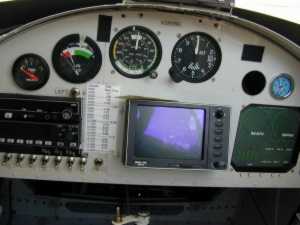 After the attempt came hours of second-guessing. "You can't just quit every time you hear a burp or when something spooks you. You'd never get a world record if you did that. I just hate it for Exxon that I'm below the 50-percent mark (in time-to-climbs) for them. I want to win a few." Bohannon is hopeful his team can get a slot at EAA AirVenture 2000 to try the 6,000-meter climb again. "We're planning on running the Kitty Hawk-to-Oshkosh race before the show, so maybe we'll find a new niche," Bohannon told us with a wink. Don't believe it for a minute. Bruce and his fast and furious Exxon Flyin' Tiger will soon be climbing back for more.
After the attempt came hours of second-guessing. "You can't just quit every time you hear a burp or when something spooks you. You'd never get a world record if you did that. I just hate it for Exxon that I'm below the 50-percent mark (in time-to-climbs) for them. I want to win a few." Bohannon is hopeful his team can get a slot at EAA AirVenture 2000 to try the 6,000-meter climb again. "We're planning on running the Kitty Hawk-to-Oshkosh race before the show, so maybe we'll find a new niche," Bohannon told us with a wink. Don't believe it for a minute. Bruce and his fast and furious Exxon Flyin' Tiger will soon be climbing back for more.
"Go-Fast" King Mods Mooneys, Funds Fury
LoPresti Unveils Something New At SnF...
Adam Fineberg of Saratoga, Calif., is a Mooney maniac who is about to be the proud owner of a Mooney "first." At Oshkosh '99, Fineberg found himself standing in the camp store line with none other than Roy LoPresti, he of Speed Merchant fame. The two struck up a conversation and by the end of the evening, Fineberg had volunteered his 1980 Mooney 201 as LoPresti's latest guinea pig. "We're just up to our usual," LoPresti told AVweb's Liz Swaine. "Making airplanes go fast." That "usual" is a new speed mod - soon to be available for 201/E/F and possibly "C" models - cleaning up the Mooney cowl and nose gear doors.
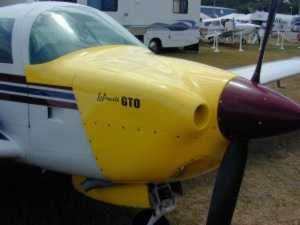 Research and development on the mod is complete, production tooling is done, only the structural report and flight testing are left to do. LoPresti estimates the mod will be STC'd and ready for market in about 60 days. So what will your roughly $9,900 (plus $2,900 for installation) buy you? Speed, of course. The cowl mod - which looks very similar to what LoPresti did for the Grumman Tiger - will make the airplane cleaner and the nose gear doors less draggy. A "SCRAM" or Special Clean RAM Air mod will boost manifold pressure in flight, eking out every knot the Mooney has to offer. "So far," LoPresti told us, "the computer models are showing us 8-10 mph faster."
Research and development on the mod is complete, production tooling is done, only the structural report and flight testing are left to do. LoPresti estimates the mod will be STC'd and ready for market in about 60 days. So what will your roughly $9,900 (plus $2,900 for installation) buy you? Speed, of course. The cowl mod - which looks very similar to what LoPresti did for the Grumman Tiger - will make the airplane cleaner and the nose gear doors less draggy. A "SCRAM" or Special Clean RAM Air mod will boost manifold pressure in flight, eking out every knot the Mooney has to offer. "So far," LoPresti told us, "the computer models are showing us 8-10 mph faster."
Fineberg turned his beloved Mooney over to LoPresti and company in October and was able to fly it for the first time the Friday before Sun 'n Fun. In addition to being noticeably quieter, Fineberg says the plane was noticeably faster. "I'm really impressed with the increase in manifold pressure from the RAM air. It went from one-quarter inch at 8,500 feet to one-point-three inches, and gave me an additional nine knots of airspeed." Fineberg is chomping at the bit to get his Mooney home, but doesn't expect to see it before Memorial Day and is resigned to that. As happy as he is with the plane, there is something he wants changed between then and now. "That yellow color. My wife told me she hoped it wasn't Roy's trademark yellow. When I saw it fly into SnF Friday, the first thing I saw was that yellow."
...But, How Swift Is His Fury?
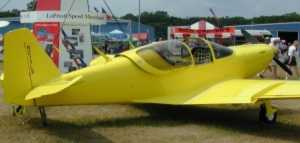 Mooney mods aren't the only thing LoPresti is concentrating on, of course. He is still determined to get his SwiftFury up and flying, lawsuits or not. LoPresti also told AVweb that he is up to 90 orders but the big challenge now is to find the large amounts of money necessary to get a new aircraft certified and a production facility tooled up. LoPresti says some of the money is already spoken for, but he needs - and is searching for - more. With any luck, he says, he will have the money dialed in by the time EAA AirVenture rolls around, but even with that, the first Fury (formerly SwiftFury) won't be rolling off the production line for about three years.
Mooney mods aren't the only thing LoPresti is concentrating on, of course. He is still determined to get his SwiftFury up and flying, lawsuits or not. LoPresti also told AVweb that he is up to 90 orders but the big challenge now is to find the large amounts of money necessary to get a new aircraft certified and a production facility tooled up. LoPresti says some of the money is already spoken for, but he needs - and is searching for - more. With any luck, he says, he will have the money dialed in by the time EAA AirVenture rolls around, but even with that, the first Fury (formerly SwiftFury) won't be rolling off the production line for about three years.
Lancair Offers More Move For Your Money
Plans For Columbia Turbo 400 Unveiled
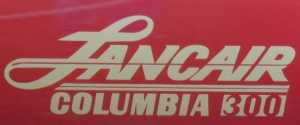 Lancair's Lance Neibauer is offering something new, faster, and pricier... but don't expect to be flying it anytime soon. The Lancair Group announced at Sun 'n Fun the development of a turbocharged version of the Columbia 300 called the Columbia Turbo 400. The plane will be powered by a Teledyne Continental TSIO-550-E engine, and will boast a cruise speed of "cookin,'" according to the Lancair press release. When asked, one company spokesman guesstimated a fast microwave "cookin'" speed of 220 knots at 18,000 feet, 240 knots at 24,000 feet.
Lancair's Lance Neibauer is offering something new, faster, and pricier... but don't expect to be flying it anytime soon. The Lancair Group announced at Sun 'n Fun the development of a turbocharged version of the Columbia 300 called the Columbia Turbo 400. The plane will be powered by a Teledyne Continental TSIO-550-E engine, and will boast a cruise speed of "cookin,'" according to the Lancair press release. When asked, one company spokesman guesstimated a fast microwave "cookin'" speed of 220 knots at 18,000 feet, 240 knots at 24,000 feet.
The airframe will remain the same all-composite, fixed-gear Columbia 300 that pilots have come to know and covet, but will have a built-in oxygen system and a different panel. The Columbia 400 will be equipped with TCM FADEC (Full Authority Digital Electronic Controls), which Lancair hopes will become an option on Columbia 300s in 2001. Lancair's goal is to have the 400 certified by 2001, with a target price of $365,000-ish. The 400's service ceiling will be set at FL240, and the gross weight and useful load will remain as in the Columbia 300. If you're itching to take a look, Lancair plans to have a Columbia 400 prototype available to gaze upon at EAA AirVenture 2000 in Oshkosh.
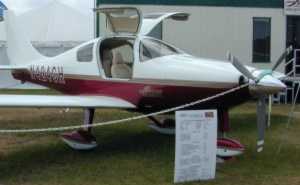 All this talk of a new plane is well and good, but what about Lancair's ability to deliver? That, of course, is the question of the hour among the GA types at SnF. Only one Columbia 300 has been delivered to a customer so far, in February, to a buyer in the Lancair factory town of Bend, Oregon. CEO Neibauer and company have a goal of one aircraft produced per day, but that is obviously some time away. A couple of things that will likely help the company is the development of a nationwide dealer program that should take the burden of sales and customer support off the factory and allow it to focus on actually producing aircraft. Additionally, the recent settlement of a $6.9 million dollar lawsuit against the country of Malaysia should free up needed funds. Once Lancair shows that it can actually deliver planes there should be no stopping them.
All this talk of a new plane is well and good, but what about Lancair's ability to deliver? That, of course, is the question of the hour among the GA types at SnF. Only one Columbia 300 has been delivered to a customer so far, in February, to a buyer in the Lancair factory town of Bend, Oregon. CEO Neibauer and company have a goal of one aircraft produced per day, but that is obviously some time away. A couple of things that will likely help the company is the development of a nationwide dealer program that should take the burden of sales and customer support off the factory and allow it to focus on actually producing aircraft. Additionally, the recent settlement of a $6.9 million dollar lawsuit against the country of Malaysia should free up needed funds. Once Lancair shows that it can actually deliver planes there should be no stopping them.
Cirrus: $75 Million And Counting
Looking For Money As Orders Roll In
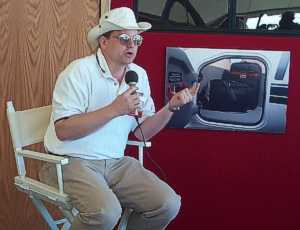 Thinking of starting an airplane production business? Cirrus president and CEO Alan Klapmeier has some advice for you. "Getting an airplane certified by the FAA is free. But all the stuff you'll need between the day you decide to build a new plane to the day you deliver it will cost you about $75 million." That's the type of pocket change most people don't keep around, which means most airplane businesses will, at some point, have to go to investment bankers. Bring those words up around Klapmeier and get ready for fireworks complete with gnashing of teeth. "Lower than lawyers," Cirrus' CEO told AVweb's Liz Swaine at SnF. "I hate investment bankers. Maybe that's been why it's been so hard to raise money." Klapmeier says the people who control the nation's dollars dump them into dot-com startups with impunity, but when it comes to putting cash into a business that can actually make money, ask questions like, 'How do you know that anyone will ever buy another airplane?' "How do you answer a stupid question like that?" Klapmeier asks, shaking his head.
Thinking of starting an airplane production business? Cirrus president and CEO Alan Klapmeier has some advice for you. "Getting an airplane certified by the FAA is free. But all the stuff you'll need between the day you decide to build a new plane to the day you deliver it will cost you about $75 million." That's the type of pocket change most people don't keep around, which means most airplane businesses will, at some point, have to go to investment bankers. Bring those words up around Klapmeier and get ready for fireworks complete with gnashing of teeth. "Lower than lawyers," Cirrus' CEO told AVweb's Liz Swaine at SnF. "I hate investment bankers. Maybe that's been why it's been so hard to raise money." Klapmeier says the people who control the nation's dollars dump them into dot-com startups with impunity, but when it comes to putting cash into a business that can actually make money, ask questions like, 'How do you know that anyone will ever buy another airplane?' "How do you answer a stupid question like that?" Klapmeier asks, shaking his head.
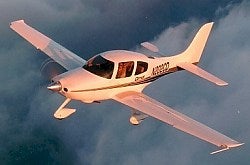 Despite the irritation of dealing with investment bankers and the ongoing search for more green, Cirrus is doing well. "We delivered nine SR20s in 1999, and in the first two months of 2000, delivered nine. That's quite an improvement." Cirrus is determined to continue to ramp up production even more. There is great incentive to do that, not only because of anxious customers on the ever-lengthening waiting list, but to pacify anxious stockholders. Once Cirrus hits the magic one airplane-per-day mark, they'll hit the magical and oh-so-lovely break-even mark as well. Plans are to produce 140 airplanes this year, 140 next year, and bump up to two to three per day by 2001. Even at that rate, they'll have work cut out for them - as of the Friday before SnF, there were 558 firm orders.
Despite the irritation of dealing with investment bankers and the ongoing search for more green, Cirrus is doing well. "We delivered nine SR20s in 1999, and in the first two months of 2000, delivered nine. That's quite an improvement." Cirrus is determined to continue to ramp up production even more. There is great incentive to do that, not only because of anxious customers on the ever-lengthening waiting list, but to pacify anxious stockholders. Once Cirrus hits the magic one airplane-per-day mark, they'll hit the magical and oh-so-lovely break-even mark as well. Plans are to produce 140 airplanes this year, 140 next year, and bump up to two to three per day by 2001. Even at that rate, they'll have work cut out for them - as of the Friday before SnF, there were 558 firm orders.
 Cirrus isn't resting on the popularity of the SR20 and is actively brainstorming possible new products. They continue to talk about a new higher-horsepower plane - currently being called the SR22 - powered by a Continental IO-550N 310-hp engine. The talk is very preliminary and the engine, horsepower and airplane name could change, but whatever it's called and whatever powers it, Klapmeier would like to see 180 knots cruise. Retractable gear? Looking at that, too. A six-place? That's somewhere down the road, as well. Before any of that happens, though, Klapmeier is interesting in getting some more whiz-bang avionics like a Skywatch system, and datalink to bring real-time weather right into the cockpit of current SR20s.
Cirrus isn't resting on the popularity of the SR20 and is actively brainstorming possible new products. They continue to talk about a new higher-horsepower plane - currently being called the SR22 - powered by a Continental IO-550N 310-hp engine. The talk is very preliminary and the engine, horsepower and airplane name could change, but whatever it's called and whatever powers it, Klapmeier would like to see 180 knots cruise. Retractable gear? Looking at that, too. A six-place? That's somewhere down the road, as well. Before any of that happens, though, Klapmeier is interesting in getting some more whiz-bang avionics like a Skywatch system, and datalink to bring real-time weather right into the cockpit of current SR20s.
Things are going glowingly for Cirrus Design. An FAA Production Certification audit came and went with no large problems, they were the focus of a complimentary article in major daily newspaper, and there's a huge demand for their aircraft. The only thing that will be better is when the company actually starts making money.
More Mooney, More Money
MAC Offers More Stuff For Your Bucks
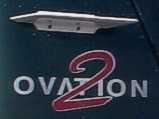 If a new Mooney bird has caught your eye, you'll be ponying up a bit more for it. The Mooney Aircraft Corporation (MAC) let slip at SnF that it is increasing the price on all models by 5%. MAC will also change its production model year to run concurrent with the calendar year instead of the current October 1 through September 30 aircraft manufacturers inherited from auto makers some years ago. Because of the change, the year 2001 aircraft won't be available until, well, 2001. MAC wants to make sure customers are pleased with those new birds when they get them and, to assure that, announced a new program called Mooney Flight Support (MFS) at SnF.
If a new Mooney bird has caught your eye, you'll be ponying up a bit more for it. The Mooney Aircraft Corporation (MAC) let slip at SnF that it is increasing the price on all models by 5%. MAC will also change its production model year to run concurrent with the calendar year instead of the current October 1 through September 30 aircraft manufacturers inherited from auto makers some years ago. Because of the change, the year 2001 aircraft won't be available until, well, 2001. MAC wants to make sure customers are pleased with those new birds when they get them and, to assure that, announced a new program called Mooney Flight Support (MFS) at SnF.
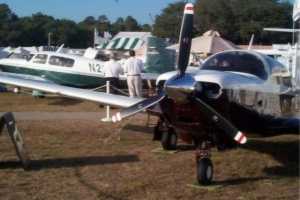 MFS will give owners of all aircraft 2000-1/2 and later dramatically increased warranty benefits and tech support. The program will include extended support hours (6 a.m.-10 p.m. CST everyday), a single point of contact under which MFS tech reps will help locate an overhaul exchange or a new part no matter who actually warranties it, three free 40-point/4-hour inspection and oil changes per year, and trip interruption reimbursement. That would mean in an unrepairable AOG (Aircraft On Ground) situation away from the owner's home base, Mooney will reimburse up to $500 per occurrence (limited to two under the warranty period). MAC calls the Mooney Flight Support the latest component in Mooney's overhaul of its entire customer/product support system.
MFS will give owners of all aircraft 2000-1/2 and later dramatically increased warranty benefits and tech support. The program will include extended support hours (6 a.m.-10 p.m. CST everyday), a single point of contact under which MFS tech reps will help locate an overhaul exchange or a new part no matter who actually warranties it, three free 40-point/4-hour inspection and oil changes per year, and trip interruption reimbursement. That would mean in an unrepairable AOG (Aircraft On Ground) situation away from the owner's home base, Mooney will reimburse up to $500 per occurrence (limited to two under the warranty period). MAC calls the Mooney Flight Support the latest component in Mooney's overhaul of its entire customer/product support system.
ExxonMobil Launches New Piston-engine Oil
Direct Marketing A Key
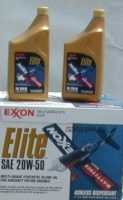 ExxonMobil made a big splash on the eve of this year's Sun 'n Fun Fly-in with the announcement of its new oil for piston aircraft engines, Exxon Aviation Oil Elite. The new 20W-50-grade lubricant is a semi-synthetic composition of an ashless-dispersant multigrade oil that was three years in development, according to the company. The new oil - which will be for direct purchases available after June 1 - "provides significant benefits to the aircraft owner in key performance areas, including ... viscosity, wear and corrosion control, in addition to excellent rust protection," said product manager Margaret Parnell. The new oil also contains the anti-wear/anti-scuffing additive required by Textron Lycoming for some of its aircraft engines and meets FAA and military specifications.
ExxonMobil made a big splash on the eve of this year's Sun 'n Fun Fly-in with the announcement of its new oil for piston aircraft engines, Exxon Aviation Oil Elite. The new 20W-50-grade lubricant is a semi-synthetic composition of an ashless-dispersant multigrade oil that was three years in development, according to the company. The new oil - which will be for direct purchases available after June 1 - "provides significant benefits to the aircraft owner in key performance areas, including ... viscosity, wear and corrosion control, in addition to excellent rust protection," said product manager Margaret Parnell. The new oil also contains the anti-wear/anti-scuffing additive required by Textron Lycoming for some of its aircraft engines and meets FAA and military specifications.
The company had a large number of cases of the product available for purchase from its tent on the flight line at SnF this week, and expects to price the new oil at around $17-$18 per gallon when purchased at retail directly from ExxonMobil. In fact, direct sales to aircraft owners figures prominently in ExxonMobil's marketing strategy. After the product's June 1 debut, aircraft owners may purchase it directly from ExxonMobil by calling a toll-free number. Orders may also be placed through the company's web site after that time.
Old Rhinebeck Rides High
WWI Beauties Grace Skies Over SnF
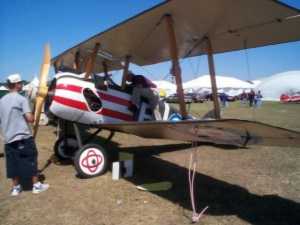 Quick! Name that smell in the air at Sun 'n Fun. It's not dust or sunscreen or new-mown hay, but the scent of castor oil wafting in the breeze. Castor oil is the lifeblood of many of the World War I-vintage planes that call Old Rhinebeck Aerodrome in Rhinebeck, N.Y., home ... and it has been flowing in bulk at SnF. There's something very special about walking through SnF exhibit halls filled to the brim with new technology and then come upon the very low technology of Old Rhinebeck's WWI fighters. Old Rhinebeck is still what aviation was: Seat of the pants flying and a lot of castor oil, please.
Quick! Name that smell in the air at Sun 'n Fun. It's not dust or sunscreen or new-mown hay, but the scent of castor oil wafting in the breeze. Castor oil is the lifeblood of many of the World War I-vintage planes that call Old Rhinebeck Aerodrome in Rhinebeck, N.Y., home ... and it has been flowing in bulk at SnF. There's something very special about walking through SnF exhibit halls filled to the brim with new technology and then come upon the very low technology of Old Rhinebeck's WWI fighters. Old Rhinebeck is still what aviation was: Seat of the pants flying and a lot of castor oil, please.
Every afternoon at SnF, crowds have been getting to see something few people have witnessed in the last 90 years ... a SPAD-7, Fokker Triplane and Sopwith Camel in the air together, showing what aviation was like in the very early days. The crowd reactions range from reverence to downright awe. "You know, 90% of those people wouldn't know a SPAD from a Fokker, but they love to see those old airplanes fly," says Old Rhinebeck's Jim Hare. Just getting them to SnF proved to be an aviation adventure. The museum didn't have the extra $6,000 or so it was going to cost to ship the planes from New York to Florida, and when word of their plight was published, Emery Freight stepped forward and shipped the planes free. That Emery trailer, says Hare, now smells remarkably like ... castor oil.
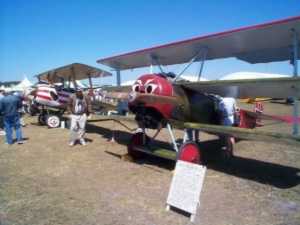 Why not fly the planes from New York, you say? Well, the 160-hp Gnome rotary that powers the Sopwith Camel has a TBO of 16 hours. You read right, 16 hours. Old Rhinebeck pilot Gene DeMarco says the original engine manual recommends that at 16 hours the engine be disassembled, inspected and put back together again. Similarly, getting the Camel, SPAD-7, and Fokker Triplane into the air every day at SnF takes hours of preparation. Each plane's spark plugs and engine must be cleaned, the distributor rings must be wiped down, the pushrods manually oiled and all serviced with ... you got it, castor oil. The after-flight cleaning also takes a little time. The Sopwith has something called a "Total Loss Oil System" which means exactly what it says. When the plane lands, 12 pints of castor oil must be wiped off of pilot and fuselage or it turns into a gummy varnish that sticks forever.
Why not fly the planes from New York, you say? Well, the 160-hp Gnome rotary that powers the Sopwith Camel has a TBO of 16 hours. You read right, 16 hours. Old Rhinebeck pilot Gene DeMarco says the original engine manual recommends that at 16 hours the engine be disassembled, inspected and put back together again. Similarly, getting the Camel, SPAD-7, and Fokker Triplane into the air every day at SnF takes hours of preparation. Each plane's spark plugs and engine must be cleaned, the distributor rings must be wiped down, the pushrods manually oiled and all serviced with ... you got it, castor oil. The after-flight cleaning also takes a little time. The Sopwith has something called a "Total Loss Oil System" which means exactly what it says. When the plane lands, 12 pints of castor oil must be wiped off of pilot and fuselage or it turns into a gummy varnish that sticks forever.
"Go into my closet at home," DeMarco told AVweb's Liz Swaine, "and the first thing you'll smell is castor oil. It's impossible not to be around these planes and not be a dirty, oily mess. " But this is a dirty, oily mess most aviators would envy. How many 38-year-old pilots can claim logbook entries for a Great Lakes, Curtis Fledgling, Curtis Jenny and Sopwith Camel? Chances are just one named DeMarco. Though the Old Rhinebeck SPAD, Fokker and Sopwith are recreations of originals, the Sopwith flies behind an original 90-year-old Gnome rotary engine. "It makes you very aware of all the places you can land," DeMarco said. "Roads, fields, long driveways, pieces of grass."
While the WWI planes' flight controls are similar to modern airplanes, their powerplants are a completely different story. Speed is controlled with the magnetos instead of with a throttle. In the Sopwith, when DeMarco decides to throttle back, he flips on the "Blip Mag" and shorts the mags out to slow the engine down. The problem with slowing the plane is that even though the mags aren't firing, the rotary engine is still turning, and when the engine is turning, fuel is still flowing, leading to increased risk of fire.
While you're "blipping" the engine to control the speed, you've also got to make certain not to let the prop RPM creep above 1,300. If you do, the manual warns there is "danger of bursting." While we at AVweb aren't quite certain what that means, we would absolutely prefer to avoid it. If you're not able to see these grand old girls at SnF, don't miss out on the thrill of watching airplanes from the Pewter Age of Aviation (pre-Golden) fly. Old Rhinebeck Aerodrome puts on airshows every Saturday and Sunday from June 15-October 15. The museum is open from May 15-October 31 and would love to have you drop by. Check them out at the Old Rhinebeck Aerodrome web site.
'Hey, Balloons Are Aircraft, Too!'
 Last summer at EAA AirVenture '99, AVweb searched high and low for any sign that lighter-than-air craft are part of the sport aviation world - but we searched in vain. It's not that they aren't a major player in sport aviation; instead there just weren't any at AirVenture. Here at Lakeland, Fla., for Sun 'n Fun 2000, LTA joins the party - a hefty Budweiser blimp flies round and round the field, and on Tuesday night the hot-air balloons came out to play. It was a little too windy, and the gigantic pink Energizer bunny never quite got standing up straight - a hardworking crew got him to sort of hunch over with the wind roaring past his ears, and after about 20 minutes of that packed it in.
Last summer at EAA AirVenture '99, AVweb searched high and low for any sign that lighter-than-air craft are part of the sport aviation world - but we searched in vain. It's not that they aren't a major player in sport aviation; instead there just weren't any at AirVenture. Here at Lakeland, Fla., for Sun 'n Fun 2000, LTA joins the party - a hefty Budweiser blimp flies round and round the field, and on Tuesday night the hot-air balloons came out to play. It was a little too windy, and the gigantic pink Energizer bunny never quite got standing up straight - a hardworking crew got him to sort of hunch over with the wind roaring past his ears, and after about 20 minutes of that packed it in.
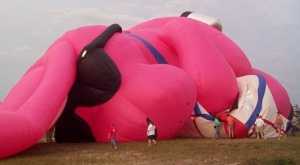 Four more standard-shaped hot-air balloons scattered around the field had better luck. As the twilight set in and the night airshow began, they kept their balloons glowing for over an hour with frequent blasts of flames from their propane burners. The wind kept those pilots busy - "This thing is just going to rock and roll, and there's nothing you can do except ride it," balloonist Tarp Head, of Helen, Ga., told AVweb's Mary Grady, as another gust of wind sent his wicker basket straining against its tethers. High winds canceled Sunday's early-morning race, too; maybe next year the balloons will get off the ground.
Four more standard-shaped hot-air balloons scattered around the field had better luck. As the twilight set in and the night airshow began, they kept their balloons glowing for over an hour with frequent blasts of flames from their propane burners. The wind kept those pilots busy - "This thing is just going to rock and roll, and there's nothing you can do except ride it," balloonist Tarp Head, of Helen, Ga., told AVweb's Mary Grady, as another gust of wind sent his wicker basket straining against its tethers. High winds canceled Sunday's early-morning race, too; maybe next year the balloons will get off the ground.
NOTE: This is only the first installment in AVweb's two-part coverage of Sun 'n Fun 2000 - be sure to check out Part Two. In the meantime, sit back, relax, and scroll through this collection of images from this year's event, including more images associated with the stories above.

